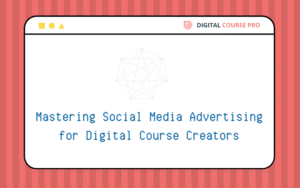Email Marketing: Building and Nurturing Your Subscriber List is a critical module in the “10 Steps to Mastering Simply Passive Digital Marketing Course.” This segment focuses on essential strategies and techniques for effectively growing and engaging with your email subscriber base. Whether you’re new to email marketing or looking to refine your approach, this course provides a comprehensive guide to creating compelling campaigns that resonate with your audience. Learn how to build a quality subscriber list, craft engaging content, and utilize segmentation and automation to maximize campaign effectiveness. Explore our detailed page to begin mastering email marketing and nurturing meaningful relationships with your subscribers today.
Understanding Email Marketing Basics
- Benefits of Email Marketing:
Email marketing is a powerful tool for businesses to communicate directly with their audience, build relationships, and drive conversions. Benefits include cost-effectiveness, high ROI potential, scalability, and the ability to deliver targeted and personalized messages. - Types of Emails:
- Promotional Emails: Highlight sales, promotions, or special offers to drive immediate action from subscribers.
- Transactional Emails: Confirm transactions, provide order updates, or deliver receipts.
- Educational Emails: Share industry insights, tips, or how-to guides to position your brand as an authority.
- Newsletters: Curate content, updates, and company news to keep subscribers informed and engaged.
- Welcome Emails: Greet new subscribers, set expectations, and introduce your brand’s value proposition.
- Key Metrics for Success:
- Open Rate: Percentage of subscribers who open your email.
- Click-Through Rate (CTR): Percentage of recipients who click on links within your email.
- Conversion Rate: Percentage of recipients who complete a desired action, such as making a purchase.
- Bounce Rate: Percentage of emails that are undelivered due to invalid email addresses or other issues.
Building Your Subscriber List
- Lead Magnets: Offer valuable incentives, such as e-books, whitepapers, or exclusive content, in exchange for email subscriptions.
- Sign-Up Forms: Place sign-up forms prominently on your website, blog, and social media profiles to capture visitor information.
- Social Media Promotion: Promote your email newsletter on social media platforms to attract followers who are interested in your content.
Segmenting Your Audience
- Importance of Audience Segmentation:
Segment subscribers based on demographics (age, gender, location), behavior (purchase history, engagement level), and interests (preferences, content interactions). - Segmentation Criteria:
- Demographic Segmentation: Tailor content and offers based on subscriber demographics.
- Behavioral Segmentation: Send targeted emails based on subscriber actions, such as previous purchases or website visits.
- Interest-Based Segmentation: Deliver personalized content that matches subscriber interests and preferences.
Crafting Compelling Emails
- Writing Subject Lines: Create concise, compelling subject lines that capture attention and encourage recipients to open your emails. Use personalization, urgency, or curiosity to increase open rates.
- Designing Email Layouts: Use responsive design principles to ensure emails render correctly on all devices. Incorporate branded visuals, clear CTAs, and scannable content to improve readability and engagement.
- Providing Valuable Content: Deliver content that provides value to subscribers, such as exclusive offers, educational resources, or relevant industry news.
Automation and Drip Campaigns
- Benefits of Email Automation:
- Time Efficiency: Automate repetitive tasks, such as welcome emails or follow-ups, to save time and streamline workflows.
- Consistency: Maintain regular communication with subscribers through scheduled emails.
- Personalization: Deliver personalized messages based on subscriber behavior or triggers, such as abandoned cart reminders or birthday greetings.
- Setting Up Drip Campaigns:
- Welcome Series: Introduce new subscribers to your brand, products, and services over a series of automated emails.
- Educational Series: Provide value through a sequence of emails that educate subscribers on relevant topics or features of your offerings.
- Nurture Campaigns: Guide leads through the sales funnel with targeted content that addresses their needs and challenges.
Personalization and Customization
- Personalizing Email Content: Address subscribers by name, segment emails based on preferences or behavior, and tailor content to reflect subscriber interests.
- Dynamic Content: Use dynamic content blocks to customize email content based on subscriber data, such as location-specific offers or product recommendations.
Compliance and Best Practices
- Legal Requirements: Familiarize yourself with email marketing regulations, such as GDPR (General Data Protection Regulation) in Europe and CAN-SPAM Act in the United States, to ensure compliance with consent, privacy, and unsubscribe requirements.
- Best Practices:
- Permission-Based Marketing: Obtain explicit consent from subscribers before sending commercial emails.
- Opt-Out Options: Include clear unsubscribe links and honor unsubscribe requests promptly.
- Transparency: Clearly identify yourself as the sender and provide contact information in your emails.
Analyzing and Optimizing Performance
- Implementing Analytics Tools:
Use email marketing platforms (e.g., Mailchimp, Constant Contact, HubSpot) to track email performance metrics, such as open rates, CTRs, and conversion rates. - Data-Driven Decisions: Analyze email campaign data to identify trends, understand subscriber behavior, and optimize future campaigns. Test different elements (subject lines, content formats, CTAs) to improve engagement and conversion rates.
Re-engagement Strategies
- Identifying Inactive Subscribers: Monitor engagement metrics to identify subscribers who haven’t interacted with your emails recently.
- Re-engagement Campaigns: Create targeted campaigns to re-engage inactive subscribers with compelling offers, personalized content, or surveys to gather feedback and preferences.
- List Maintenance: Regularly clean and update your email list by removing inactive or unsubscribed contacts to maintain list hygiene and improve deliverability rates.
By mastering these fundamental aspects of email marketing, businesses can build and nurture relationships with their audience, drive engagement and conversions, and achieve measurable success through effective email campaigns.





